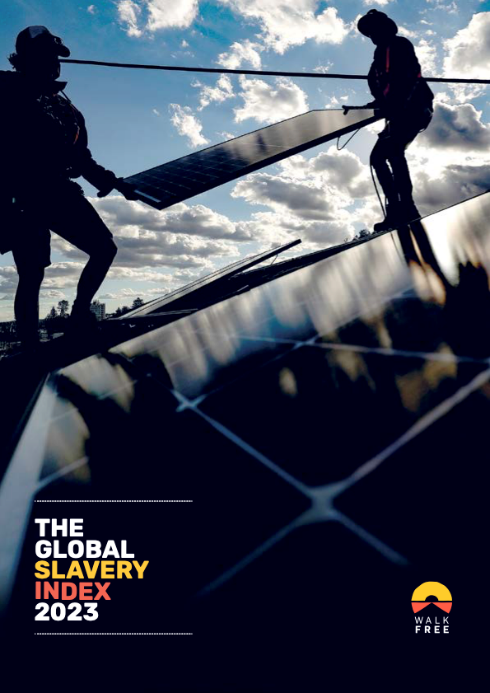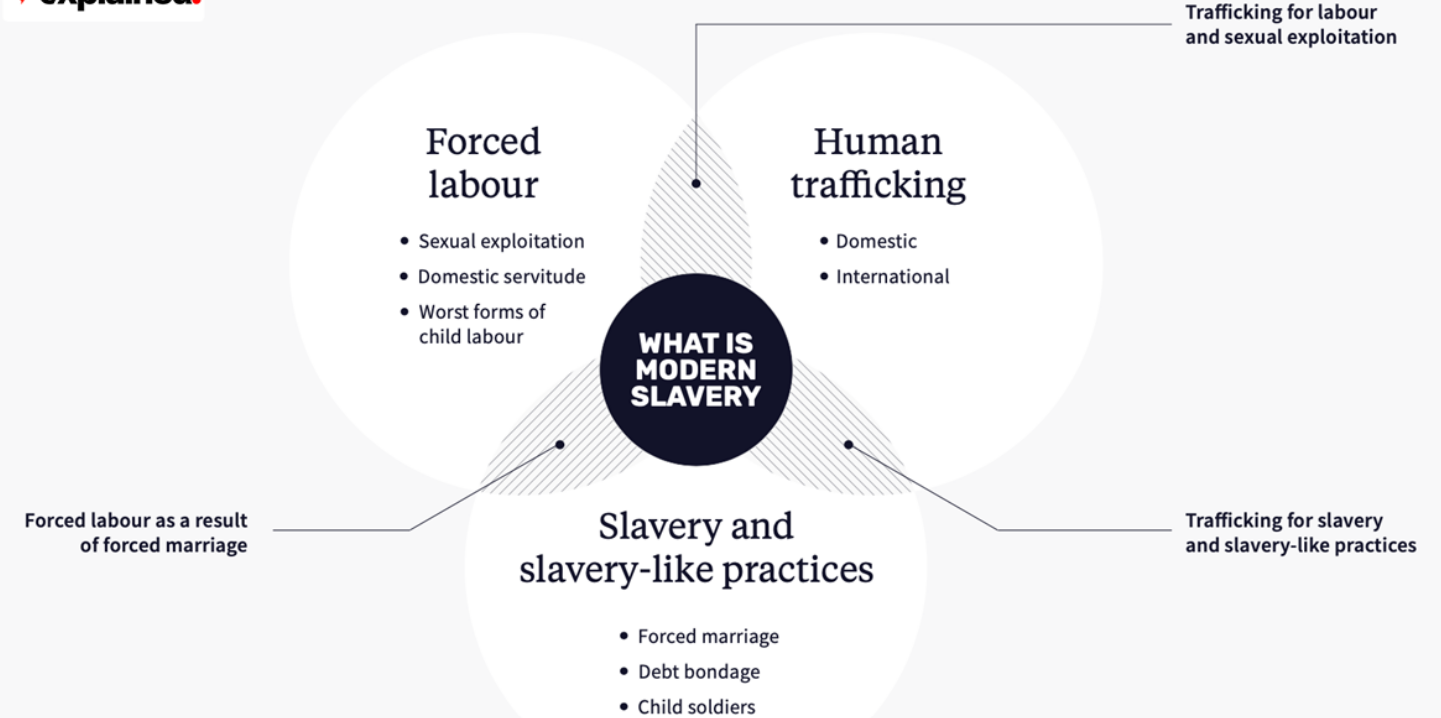Free Courses Sale ends Soon, Get It Now


Free Courses Sale ends Soon, Get It Now



Disclaimer: Copyright infringement not intended.
Context
Global Slavery Index
About
Publishing Body
Editions
Definition of Modern Slavery according to GSI

SDG on Modern Slavery
“Take immediate and effective measures to eradicate forced labour, end modern slavery and human trafficking and secure the prohibition and elimination of the worst forms of child labour, including recruitment and use of child soldiers, and by 2025 end child labour in all its forms.”
Findings of 2023 Edition
"Modern slavery is hidden in plain sight and is deeply intertwined with life in every corner of the world".
Country-wise findings
Following are the countries with the lowest prevalence:
However, apart from prevalence, the index also calculates the countries hosting the maximum number of people living in modern slavery. Here the list is as follows:
Criticism of GSI
|
PRACTICE QUESTION Q. Consider the following statements. a) The Global Slavery Index is published by International Labour Organization. b) Target 8.7 of the Sustainable Development Goals (SDGs) states: Take immediate and effective measures to eradicate forced labour, end modern slavery and human trafficking and secure the prohibition and elimination of the worst forms of child labour, including recruitment and use of child soldiers, and by 2025 end child labour in all its forms.” Which of the statements given above is/are correct? 1) Only a 2) Only b 3) Both a and b 4) Neither a nor b Correct Answer: 2) Only b |
© 2024 iasgyan. All right reserved